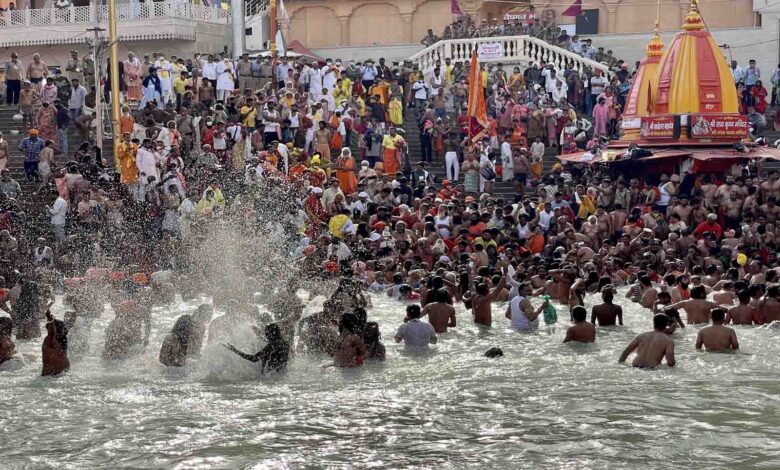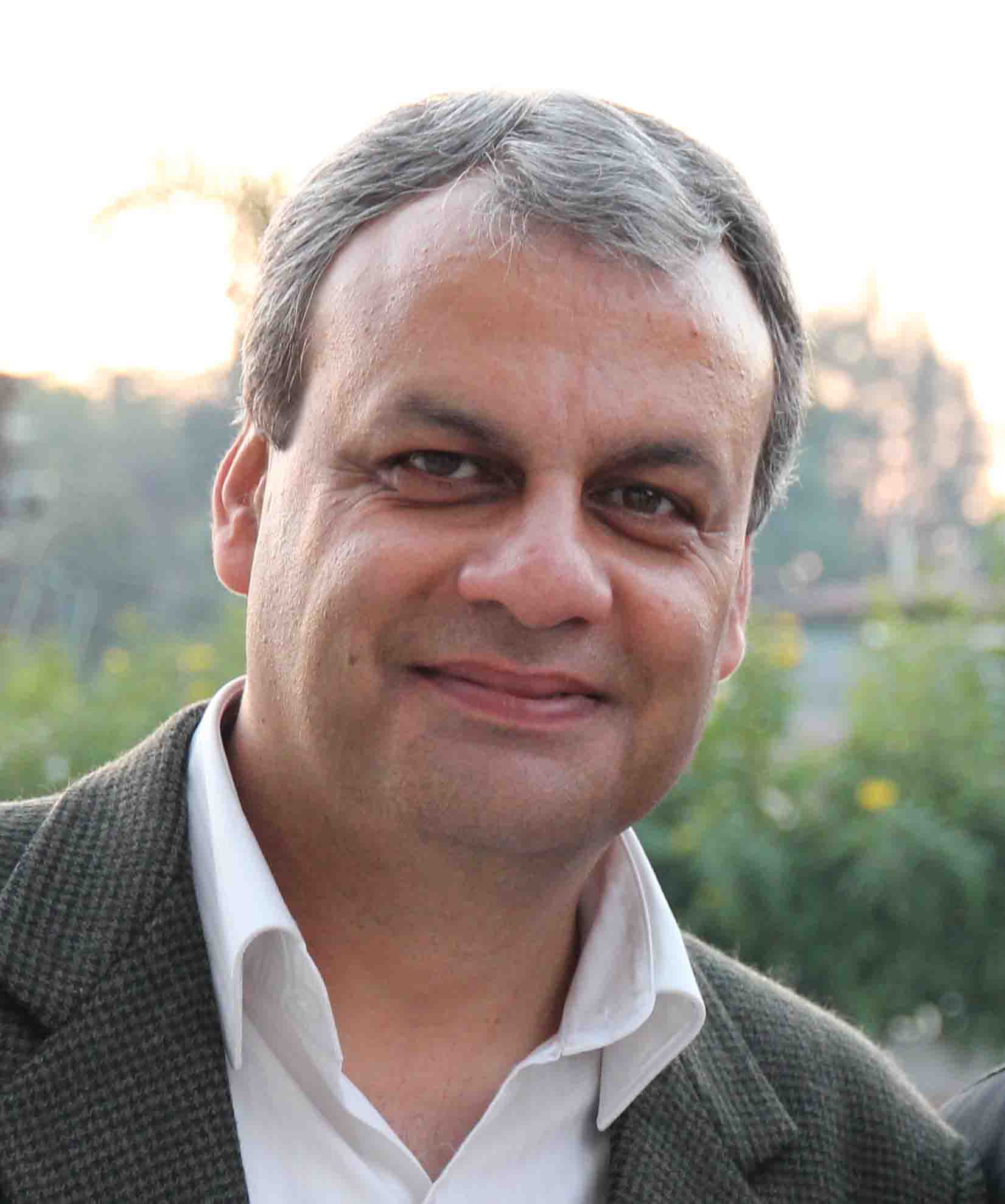What makes for a great Kumbh?

HILLBILLY
 LOKESH OHRI
LOKESH OHRI
What makes for a great Kumbh experience? Helicopters showering petals or DJs blaring music? Pandals covered with saffron or the holding of Sanatani rock concerts? As is usually the case, visitors to the largest religious congregation of humanity anywhere on the planet expect something quite different, while all administrators can deliver is pomp and pageantry. While the pilgrim is looking for the sublime, the administrators are bent upon delivering the crassly spectacular.
“Imagine the entire population of Shanghai—about 23 million—camping on a 4×8 kilometre field. Add to that mass of humanity every last man, woman and child in New York City and you’re getting closer to the Kumbh’s expected attendance. But you’re still not quite there. The area of the Mela is also on the rise: from 1,495.31 hectare and 11 sectors in 2001 to 1936.56 hectare and 14 sectors in 2013 (In 2025 they had swollen to 25!). That’s about 4,784 acres of land – about the size of Madrid’s famous Casa de Campo Park!”
This is how the website Quartz described the bathing ghats of the Kumbh Mela on the banks of the sacred confluence at Prayagraj in 2013. This description, in some ways, describes the complexity of organising the Kumbh. The Mela is indeed a logistics nightmare and crowds have just kept on swelling edition after edition of the Mela. And generally, administrations are guilty of over-inviting.
From the Great Bath at Mohenjo-Daro to several historical texts clearly mentioning large, well-established bathing festivals at sites like Haridwar, based on the twelve-year cycle of the planet Jupiter, to later Mughal era texts like Khulasat-ut-Tawarikh (1695–1699 CE) and Chahar Gulshan (1759 CE) that described it, the Kumbh Mela of today has a come a long way. Gone are the days when the Nishads, the community of boatmen, took pilgrims on leisurely boat rides across the Sangam and narrated myths about the Kumbh. This is the day and age of reels and instant gratification, where bathing in the waters is more an act of showing than of seeking. But perhaps this is a good time to unpack what it takes to organise a great Kumbh, and why it attracts millions, who flock to it despite knowing the risks involved.
Recently, one came across visuals of the Uttarakhand Chief Minister taking a dip at the confluence, the Sangam at Prayagraj at the Kumbh Mela in our neighbouring State. He appeared quite content and spiritually satiated with the experience. Later on, while talking to the media, he announced that his holy dip had inspired him to make the next big event along the Ganga, the 2027 Ardhakumbh at Haridwar, even more spectacular.
While one certainly hopes that the government of the day lives up to the task of delivering a safe and flawless Kumbh gathering, an event for which every superlative possible has been used in describing its magnitude, one also realises that this is just not possible unless one learns from the experiences of the past and the present. With a few more massive bathing rituals still to go, the 2025 Kumbh Mela has earned accolades, but has also had its fair share of tragic and avoidable mishaps. While it is of no use crying over spilt milk, would it not be prudent if we, in Uttarakhand, understood what is significant and what is superfluous at a Kumbh Mela?
The first thing that we must guard against while organising a spiritual congregation such as the Kumbh is its crass commercialisation. One must remember that the banks of the sacred river Ganga in Devbhoomi Uttarakhand are first and foremost, tapobhumi, a place of renunciation, austerity and simplicity. As we have done with the Char Dham, we must not fall prey to the numbers’ game this time, trying to outdo the footfall the current Kumbh Mela has achieved. The Kumbh is not an event where numbers are significant, it is, on the other hand, an intense spiritual experience for seekers. The moment tapobhumi begins to transition into bhogabhumi, a land of consumerist culture, congregations like the Kumbh begin to lose their pull. We have seen in the past that whenever the Kumbh is over-marketed and hyped beyond reality, it transforms into just another event, sans any spiritual appeal. Uttarakhand must guard against this possibility.
At times government and media narratives limit the Kumbh Mela to the pomp, pageantry and politics of the akhadas and the naga sadhus. Initially, there were only four akhadas, which have split into several subsidiary akhadas due to differences in the leadership and expansion in the number of followers. There are about thirteen akhadas now that are allowed to participate in the Kumbh Mela and they have formed the Akhil Bhartiya Akhada Parishad with two representatives from each. Being a significant part of the celebrations, administration in Haridwar must begin consultations with this body immediately to ensure the smooth conduct of the bathing rituals.
While the akhadas and Naga Sadhus are undoubtedly a photographer’s delight in every mela, the real substance of the Kumbh Mela are the kalpavasis, the ordinary simple folk who come and stay the entire duration of the Kumbh to just be witnesses to the mass of humanity passing them by. They spend their time visiting camps, listening to discourses, participating in the cultural fare that the Kumbh automatically transforms into. Therefore, the really important people at the Kumbh Mela are the ordinary village folk that flock from different corners of India towards the sacred Kumbh. Their only wish is to be treated with dignity, and given an opportunity to bathe at clean ghats. Reserving one large bathing space for VIPs taking a dip in their fancy dress, collecting copious data for their Instagram reels, is indeed a bad idea. It is indeed disheartening to come across visuals of VIPs bathing in splendid isolation while common folk are stranded in queues for several hours on end. While planning the Kumbh Mela, primacy must be given to the ordinary pilgrim and not the publicity seeker.
Another worrying sight one is witnessing are the traffic jams, sometimes hundreds of kilometres long, and the accompanying crowd chaos at railway stations. With Uttarakhand getting connected through expressways and railway links with the rest of the country, we must be very careful in looking at the carrying capacity of the Kumbh Mela site at Haridwar, which is much less commodious than the one at Prayagraj. Therefore, the administration would do well to prepare plans to limit the number of arrivals, based on accurate carrying capacity surveys.
A successful Kumbh Mela would be one that, as an event, is based on equity and justice, for the only one thing a devotee is seeking here is the opportunity to seek the blessings of mother Ganga with dignity. In the past, the Kumbh Melas never had the benefit of scientific crowd management techniques. There were no CCTV cameras, command and control centres, facial recognition software, satellite imagery or even drones. In today’s day and age, sophisticated technology is available to us, something that can be deployed easily to deal with the crowds. Therefore, no excuses can be offered for stampedes.
The essence of organising a successful Kumbh, therefore, is the organic emergence of an aesthetic alternate city, a world of simple spirituality, coinciding with the dates of the mela. This city should treat everyone equally, and send the poorest of the poor back to their villages safe, after giving them a serene and simple experience. For it is the common folk, their presence and happiness, that make the Kumbh Mela great. Uttarakhand would do well to break from the routine and deliver a fantastic Ardha-Kumbh that befits the epithet of tapobhumi. An effort to create bhogabhumi, will definitely backfire.
(The author is a writer, traveler and anthropologist; views expressed are personal)






